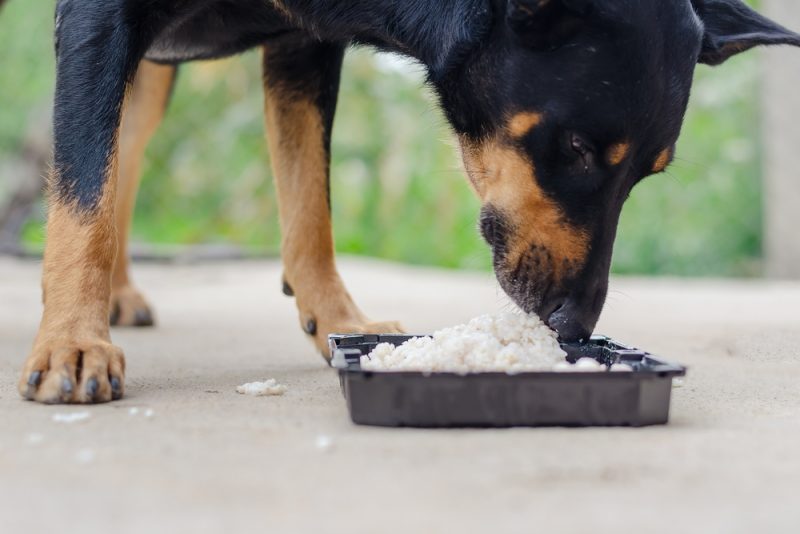In this article
View 2 More +All travel information presented herein is presented for the reader’s benefit, but may include unintended omissions, or inaccuracies. It is the responsibility of the reader to ensure they have the appropriate preparations, information, and have met travel requirements for their pet, using approved veterinary sources. This is for general information, only.
I have lived in Hawaii since 2008, and when my family moved to the islands, we had two dogs to bring along with us. What we didn’t know was that Hawaii is a rabies-free state, so canines cannot freely travel there, whether to live or just to visit. Before traveling with pets to Hawaii the state government requires that owners take a series of steps to ensure and prove that their pets do not have rabies before entering Hawaii.
Back in 2008, I remember the process felt overwhelming and stressful. It took about a year’s worth of veterinarian visits and paperwork submissions to complete the process. Fortunately, it doesn’t take as long nowadays due to updated policies, resources, and services.
Still, I thought that I’d share the process of bringing a dog to Hawaii so you can decide whether it’s worth jumping through all the hoops to go on vacation with them. Here is everything that you need to know about the process of bringing dogs to the Aloha State, complete with resource links.

Dogs Traveling to Hawaii Checklist
- Plan With Your Veterinarian Months in Advance
- Schedule Rabies Vaccinations as Necessary
- Complete an FAVN Antibody Test
- Be Prepared to Quarantine Your Dog
- Check Island Requirements
- Fill Out the Proper Forms
- Gather, Complete, and Submit All Paperwork
- Pay the Applicable Fees
- Review the Hawaii State Information Page Frequently

The 9 Steps for Traveling With a Dog to Hawaii
1. Begin Preparing Months in Advance
Every dog that will be entering the state of Hawaii must be vaccinated for rabies and have an FAVN antibody test done before their arrival. At least two rabies vaccines are needed, and neither the last vaccine nor the FAVN antibody test can be completed less than 30 days upon arrival. Pets must also be microchipped prior to testing.
Other waiting periods and requirements can add to the timeline, so tell your vet about your plans to visit Hawaii several months before you plan to go to the state.

2. Know the Rabies Vaccine Requirements
Your dog must have had at least two rabies vaccinations before they arrive in Hawaii. The most current rabies vaccine must be administered at least 30 days after the first vaccine and within 30 days of arrival in Hawaii.
An original rabies certificate must be presented for each vaccination with the rest of the required paperwork. The following information must be included on the rabies certificates:
- Vaccine name
- Lot or serial number
- Booster interval
- Vaccination date
- Lot expiration date
3. Know the FAVN Antibody Testing Requirements
The FAVN antibody test that is required by the state of Hawaii looks for antibodies that develop after rabies vaccination. The idea is to ensure that the dog being tested is effectively protected from the rabies virus. An FAVN antibody test must be at the lab at least 30 days prior to entry to the state and Hawaii must have the results before the dog arrives in the state.
Your veterinarian will take the antibody sample and send it to a state laboratory for testing. The results of the test will generally be sent directly from the lab to the state of Hawaii.

4. Know the Quarantine Requirements
All dogs have to “quarantine” for 30 days before entering Hawaii after their last rabies vaccine and FAVN antibody sample have been sent to the lab. The quarantine time begins 1 day after the lab receives the sample.
If a dog arrives in Hawaii before the 30-day quarantine period is up, they will be kenneled in quarantine at the owner’s expense or sent back to their original location. A dog can enter Hawaii the day after the quarantine period expires if all the paperwork is in order.
5. Know the Miscellaneous Requirements
A few more requirements must be met before you can bring your pup to Hawaii. If anything is overlooked, it can cause problems at the airport and result in your vacation being completely ruined. Here’s what else is required:
- Health Certificate — A veterinarian has to complete an official health certificate examination on your dog, which must be done within 14 days of travel.
- Treatment — All dogs must be treated for ticks, and you can’t do it yourself at home. Your vet has to do it with appropriate medication and sign off on doing so.
- Microchip — If your dog is not already microchipped, they will have to be before they can put a paw off the Hawaiian airport’s property. The microchip must be implanted before the FAVN antibody test can be taken.

6. Know the Extra Steps for Neighboring Islands
If you are flying with your dog to Kona, Maui, or Kauai, there are extra steps to take before your arrival. Neither is a big deal in terms of workload, but if either is missed, it can turn your trip to paradise into a nightmare. Here’s what you’ll have to do:
- Receive and Submit a Neighbor Island Inspection Permit — You will receive an inspection permit by email after Hawaii receives all your paperwork, and you’ll have to print and submit it to the airline before your dog can be boarded.
- Coordinate an Airport Inspection — While an animal inspection center is located at the Oahu airport, this is not the case for neighboring islands. Therefore, you will be responsible for coordinating an inspection of your dog by a participating veterinarian, who will meet you at the airport and complete the inspection.
The following veterinarians can be scheduled for inspections:
- Alii Veterinary Hospital: (808) 329-8999
- Keauhou Veterinary Hospital: (808) 322-2988
- Kona Direct Release
- At Home Animal Hospital: (808) 873-0102
- Central Maui Animal Clinic: (808) 893-2380
- Maui Direct Release: (808) 281-0496
- Kauai Humane Society: (808) 632-0610
- Kauai North Shore Animal Clinic: (808) 755-8728
7. Know the Paperwork Requirements
You will have to fill out a Dog & Cat Import Form so your dog can be released from the airport when you arrive. It’s a good idea to complete the form with your veterinarian to ensure that everything is done properly. You’ll need to send the Import Form to the state of Hawaii along with the following paperwork in enough time for the government to receive it at least 10 days before you travel to the state:
- Original health certificate from veterinarian
- Two original rabies certificates
- Payment for services
Send your paperwork to: Animal Quarantine Station, 99-951 Halawa Valley Street, Aiea, Hawaii 96701.

8. Know the Costs Involved
Several costs are involved when taking your dog to Hawaii, and they start with your veterinarian. Most vets set their own fee schedules for rabies vaccinations and FAVN antibody sampling. That said, here are a few numbers that you can use as a reference:
- FAVN laboratory fee: $70
- Airport release fee (Oahu): $185
- Inspection permit (neighboring islands): $165
- Inspection fee (neighboring islands): $200–$600 (estimate)
If your dog does not qualify for direct release from the airport because the paperwork isn’t in order or due to another reason, you may be required to quarantine your pup in-state until eligible for release, which will cost $244, plus $14.30 a day.
9. Check for Any Updates
Hawaii’s travel rules can change at any time, and it’s your responsibility to stay as informed as possible. You can do so by regularly checking the Animal Quarantine Information page on the state’s government website. It details any new or updated advisories, and it also has several FAQ sections and printable forms.


A List of Resources

Conclusion
Traveling with your dog to Hawaii may seem as simple as putting your dog on a plane, but a significant amount of paperwork and money is involved. The Hawaiian archipelago is rabies-free, and its residents wish it to remain that way, for the safety of both the people and the abundant wildlife there.
You may not find it worth the effort to bring your dog with you to the Aloha State if you’re just visiting, but if you intend to move there, you are now aware of the requirements and can begin preparations early so as to make the transition easier for everyone involved, including your pup.
Featured Image Credit: zjuzjaka, Shutterstock


















